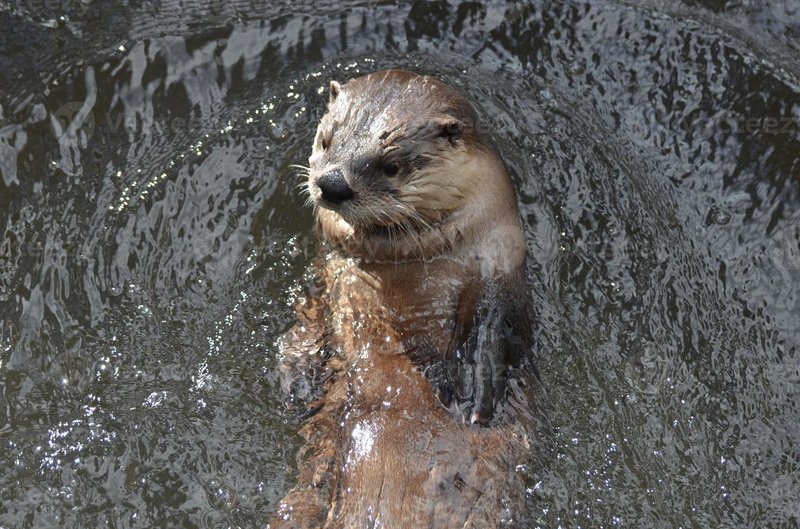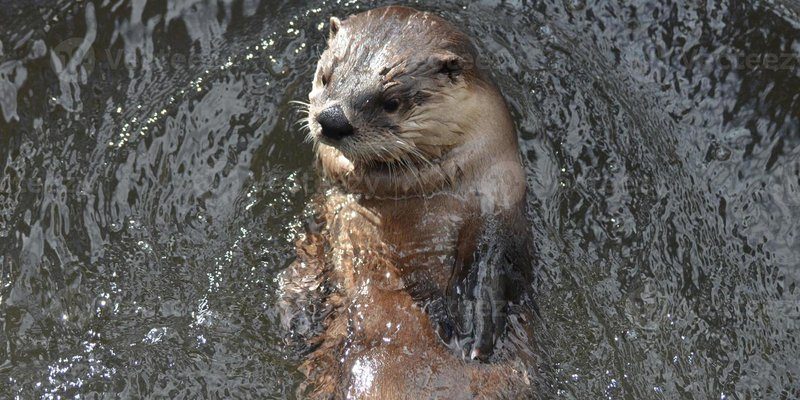
River otters are members of the weasel family, and they thrive in a range of habitats, from rivers and lakes to coastal areas. Their ability to adapt to challenging conditions is remarkable. Think about it: these animals not only have to find food but also protect themselves from predators and harsh weather. So, how exactly do they manage to survive and thrive in these environments? Let’s dive into the unique adaptations that make river otters fascinating survivors.
Adaptations for Cold Water Survival
One of the first things you’ll notice about river otters is their thick fur. This isn’t just for show; their fur is specially designed to keep them warm in icy waters. With about 600,000 hair follicles per square inch, it provides excellent insulation. Here’s the thing: when they’re wet, their outer fur repels water, allowing a layer of air to trap heat next to their skin. This is pretty handy, especially when they’re diving into frigid rivers or lakes.
But it’s not just their fur that helps them tackle cold environments. River otters have a unique body shape that aids in swift movement through water. Their streamlined bodies and webbed feet act like paddles, helping them swim efficiently. You might be wondering how long they can stay underwater. Well, they can hold their breath for up to eight minutes while they hunt or play! This impressive ability minimizes their exposure to the harsh elements of their aquatic habitats.
Finding Food in Challenging Conditions
Hunting in murky waters or during winter months can be tough, but river otters have some clever strategies to keep their bellies full. They’re opportunistic feeders, meaning they’ll eat whatever’s available, from fish and crustaceans to small mammals and even plants. This flexibility is crucial, especially when their favorite fish are scarce due to seasonal changes.
During winter, when ice covers much of their habitat, otters will often stay active by creating breathing holes in the ice. These little open spots allow them to access water without needing to swim far. Imagine having a snack bar right in your living room—just pop out, grab some food, and go back to your cozy spot! They also form groups called rafts, which help them to hunt more efficiently and keep watch for any dangers.
Building Shelters for Protection
When it comes to staying safe, river otters are pretty resourceful. They often build dens, or holts, where they can rest and raise their pups. These dens are usually located near the water’s edge, tucked away in dense vegetation or even under rocks. Having a safe, warm place to retreat to is crucial, especially during the colder months.
If they can’t find a suitable spot, otters are known to utilize natural structures like beaver lodges or abandoned burrows. This adaptability helps them navigate the challenges posed by predators or environmental changes. Just like us, they need a cozy corner to call home!
Social Behavior and Community Living
River otters are social animals and often live in family groups, which is quite beneficial for survival. Living in groups provides added safety as they can work together to look out for predators. Imagine having a team of friends who always keep an eye out for you while you enjoy a meal—that’s how otters operate. They communicate with each other through a range of sounds, from whistles to growls, which helps maintain social bonds and coordinate group activities.
In addition to safety, living in a group enhances their ability to find food. When they hunt together, they can cover more ground and drive fish into tighter areas, making it easier to catch them. So, teamwork really does make the dream work when it comes to river otters!
Dealing with Predators
Even the playful river otter must keep an eye out for predators. Their main threats include bobcats, eagles, and larger mammals like coyotes. To avoid becoming a meal, they rely on their agility and speed. When startled, an otter can dart away quickly, often making sharp turns and even swimming underwater to dodge attackers.
In addition to their evasive moves, river otters also use smell and sight to detect danger. They have a keen sense of smell that helps them pick up on potential threats from a distance. You could say they have their very own “security system” built right in! If they sense trouble, they might retreat to their dens for safety until the coast is clear.
Conservation Efforts and Future Survival
Despite their tough nature, river otters face challenges from habitat loss, pollution, and climate change. Conservation efforts are crucial to ensure their survival in the wild. Organizations work to protect waterways, reduce pollution, and create a safe environment for these playful creatures.
You might be wondering what you can do to help. Simple actions like reducing plastic use, participating in clean-up efforts, and supporting local conservation groups can make a difference. Protecting the habitats where river otters thrive isn’t just beneficial for them; it contributes to the overall health of our ecosystems.
River otters are a perfect blend of playfulness and resilience. Their ability to thrive in harsh environments showcases their amazing adaptations, from their thick fur to their social behaviors. Just like a well-practiced swimmer gliding through waves, river otters have mastered survival in even the toughest conditions.
By understanding these incredible creatures and the challenges they face, we can appreciate their role in our ecosystems and work towards their preservation. Let’s ensure future generations can enjoy the sight of a river otter gracefully navigating its home waters, just as we do today. Together, we can be advocates for nature, ensuring these furry friends continue to thrive.

